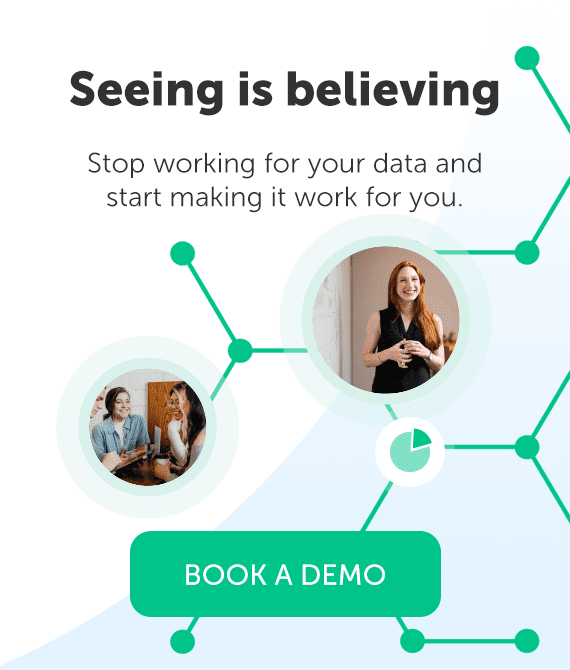Learn why and how B2B professional services organizations can create a client health score to improve retention and grow client accounts.
Client health scores give you one, clear picture of how successfully your organization is meeting client needs rather than relying on numerous, disparate signals in isolation. They also remove the burden from client managers who are often looked to as the sole or major source of confirmation on whether a client relationship is in good standing or not. While they do know the client intimately and speak with them directly on a regular basis, this may not be enough to properly assess the totality of a client relationship or their satisfaction with your firm—you need a more objective source.
So why does it all matter? Because all of this is going to be key in not only retaining clients, but also growing them—ultimately determining the strength of your overall business in both the short and long-term.
Let us take you step by step on this journey and show you how to best leverage your customer intelligence data as a key part of your client retention strategy.
First, determine your measurement approach
Your organization and its systems of record and communication contain a treasure trove of powerful data that can help you better understand the state of your client relationships, but as is the case with all information—you have to know how to use it. You can also make measuring client health as complex or as simple as you need it to be. For example, Salesforce has their Early Warning System (EWS) that combines over 100 unique signals to generate a 360 degree view of the client. On the other hand, other organizations have seen from their data that the largest predictor of health and churn are simply the adoption of particular services. This will all depend on your type of business, industry, the services you offer, etc. It is important to determine a measurement approach that makes sense for your organization and it most likely to give you an effective measurement of client health.
Then, gathering your list of predictive metrics
The signals or predictive metrics you should be listening and paying attention to may also vary widely from business to business and across industries, but here are a few relatively standard signals and systems you should be evaluating if you are interested in creating a client health score or measuring client relationships in a more objective manner than relying mostly on human perception.
Customer Relationship Management Data
Your CRM system contains a massive amount of information that can help you paint a clearer, more objective picture of client health and their potential churn risk. Additionally, most CRMs have powerful APIs that will enable you to push or pull data from within the CRM itself to other sources to feed a central score. These can include things like:
- Service optimization
- Length of relationship
- Number or frequency of support or technical tickets
- Billing data
- Past upsell success
- Contract Value
Introhive Customer Intelligence
Introhive offers several ways for you to measure the strength of your client relationships, such as lonely client and multithreading analysis. The former helps pinpoint and maintain relationships that are strong, and invest further in those that may not be getting their fair share of attention. Similarly, the latter pinpoints single threaded opportunities that represent risk; identifies existing relationships that can help you multithread; and visualizes the buying group to ensure you are engaging with an appropriate depth and breadth of the account or opportunity.
With that said, in terms of feeding a central Client Health Score, taking advantage of Introhive’s Relationship Capital Score is the way to go. This score takes into consideration over 20 attributes—from recency, quantity, cadence, and intimacy of interactions—with some added color on the importance of the contact. Use it to understand how much collective engagement, influence, and ultimately trust you have established with your various accounts.
Customer Survey Data
Customer satisfaction surveys such as Net Promoter Score (NPS)and Customer Satisfaction Score (CSAT) help determine whether a customer feels your organization’s products and services have fulfilled their expectations. This is extremely valuable information to help feed a Client Health Score, as it measures the client’s overall sentiment towards your organization and your quality of service.
Marketing Activity
Layer marketing-related activity into your Customer Health Score to get a better understanding of potential growth opportunities or churn signals. These signals may help give your marketing and client-facing teams added context around the needs of your clients, and can include things like website interactions and marketing intent data:
- Website interactions: Are clients viewing particular pages on your website or other assets?
- Marketing intent data: This type of data is provided by solutions such as 6Sense or Demandbase and can tell you what general topics employees at particular companies are searching for.
And finally, put it all together by figuring out what tools and expertise you will need to turn customer intelligence data into an accurate and objective Client Health Score
In order to successfully build an effective and compelling Client Health Score you need to have the ability to combine your selected metrics into a central location for analysis. You will also need to clearly identify an approach to how you will score each metric. For example, what weights will you assign to billing data versus the relationship score? This is where you will likely need to calibrate your score over time to best predict the chances of churn. And finally, you’ll need a place to visualize the score. This can be BI tools such as Tableau or potentially more advanced CRMs like Salesforce.
The good news is, you don’t have to do any of this alone. Introhive can guide you in the right direction, and provide the dynamic data and tools you need to build and optimize Client Health Scores you can trust to keep your business on track and thriving. Connect with us to learn more.





